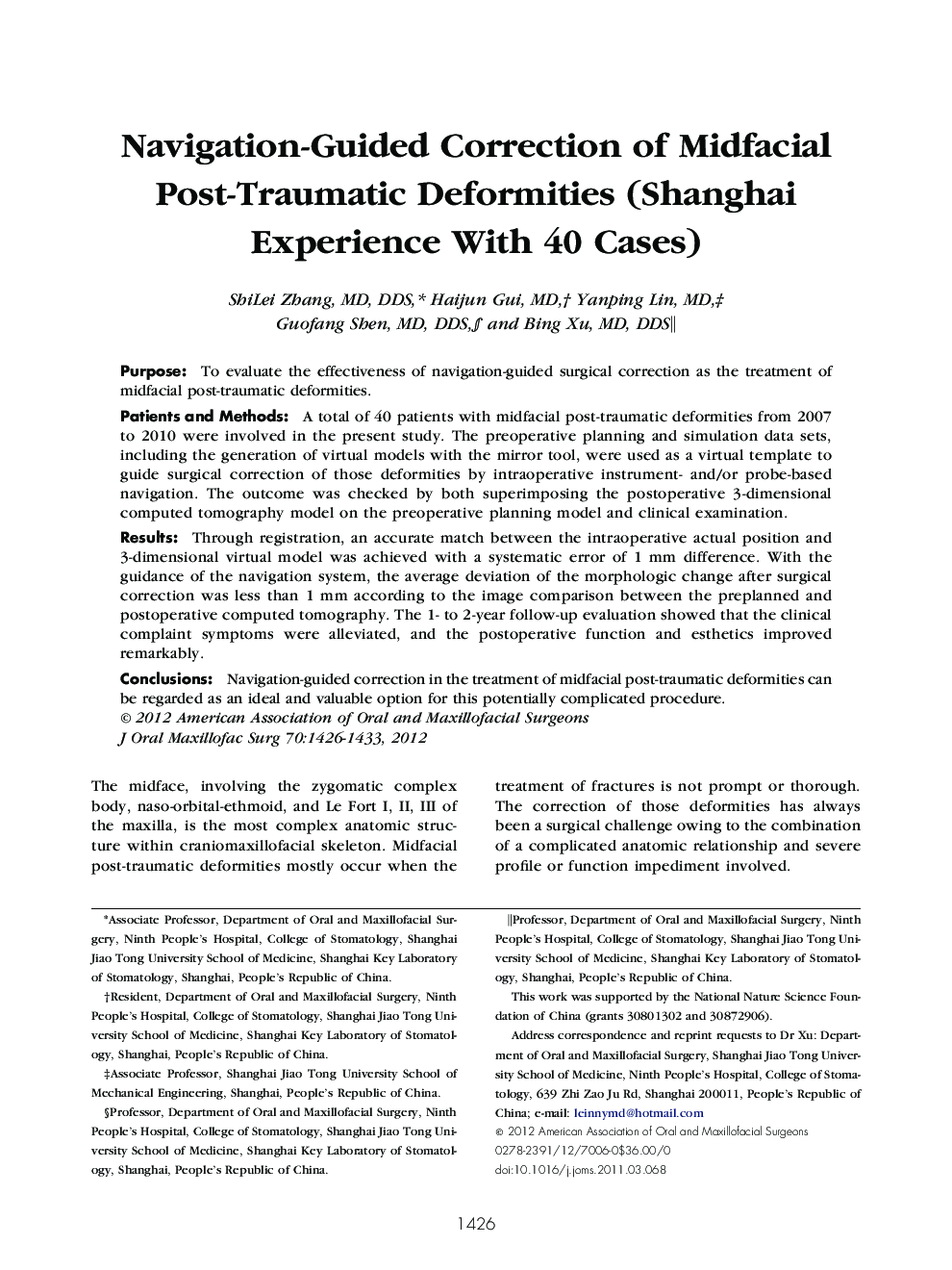| Article ID | Journal | Published Year | Pages | File Type |
|---|---|---|---|---|
| 3153104 | Journal of Oral and Maxillofacial Surgery | 2012 | 8 Pages |
PurposeTo evaluate the effectiveness of navigation-guided surgical correction as the treatment of midfacial post-traumatic deformities.Patients and MethodsA total of 40 patients with midfacial post-traumatic deformities from 2007 to 2010 were involved in the present study. The preoperative planning and simulation data sets, including the generation of virtual models with the mirror tool, were used as a virtual template to guide surgical correction of those deformities by intraoperative instrument- and/or probe-based navigation. The outcome was checked by both superimposing the postoperative 3-dimensional computed tomography model on the preoperative planning model and clinical examination.ResultsThrough registration, an accurate match between the intraoperative actual position and 3-dimensional virtual model was achieved with a systematic error of 1 mm difference. With the guidance of the navigation system, the average deviation of the morphologic change after surgical correction was less than 1 mm according to the image comparison between the preplanned and postoperative computed tomography. The 1- to 2-year follow-up evaluation showed that the clinical complaint symptoms were alleviated, and the postoperative function and esthetics improved remarkably.ConclusionsNavigation-guided correction in the treatment of midfacial post-traumatic deformities can be regarded as an ideal and valuable option for this potentially complicated procedure.
